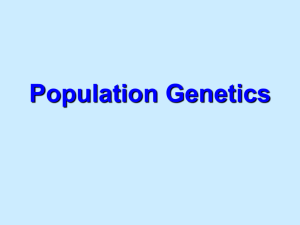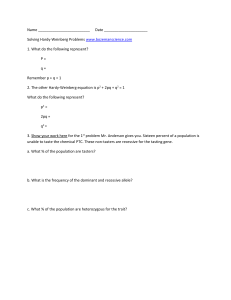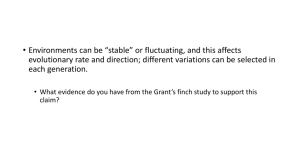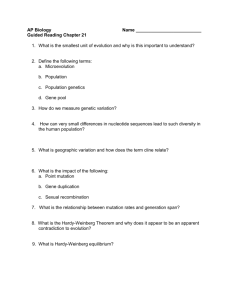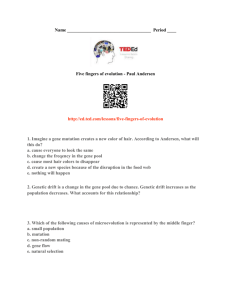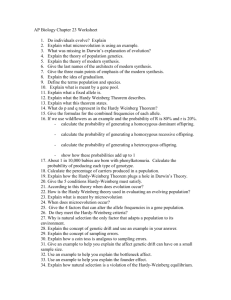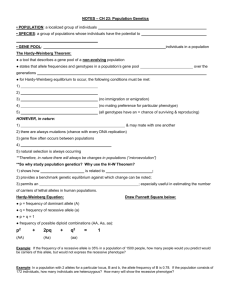Evolution Objectives
advertisement
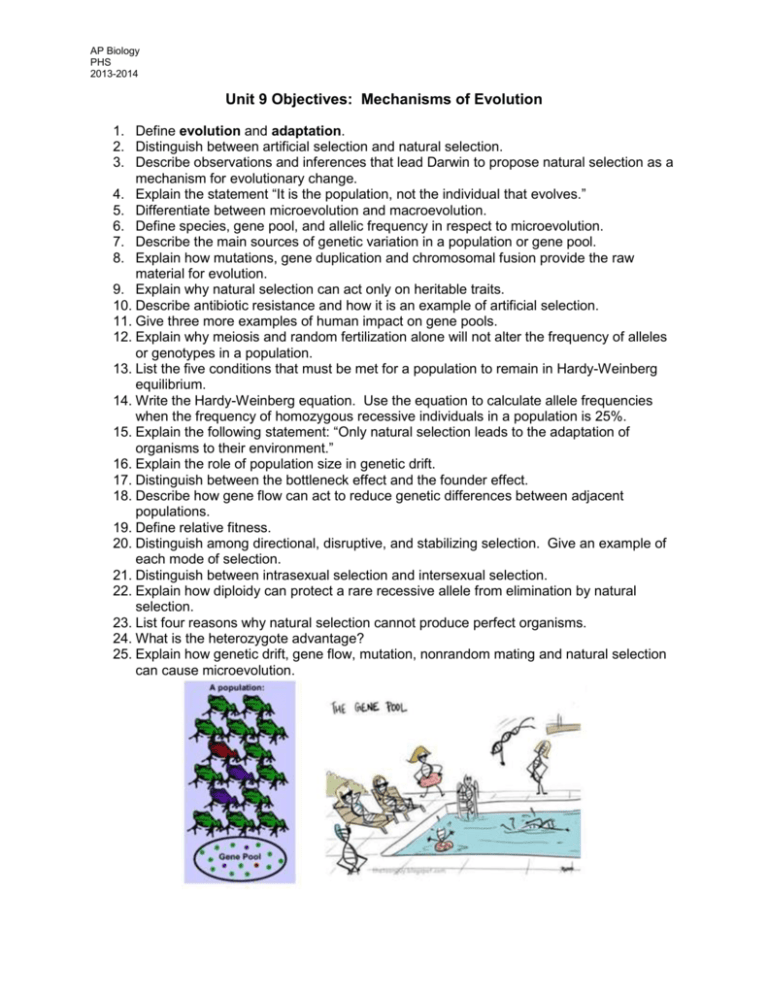
AP Biology PHS 2013-2014 Unit 9 Objectives: Mechanisms of Evolution 1. Define evolution and adaptation. 2. Distinguish between artificial selection and natural selection. 3. Describe observations and inferences that lead Darwin to propose natural selection as a mechanism for evolutionary change. 4. Explain the statement “It is the population, not the individual that evolves.” 5. Differentiate between microevolution and macroevolution. 6. Define species, gene pool, and allelic frequency in respect to microevolution. 7. Describe the main sources of genetic variation in a population or gene pool. 8. Explain how mutations, gene duplication and chromosomal fusion provide the raw material for evolution. 9. Explain why natural selection can act only on heritable traits. 10. Describe antibiotic resistance and how it is an example of artificial selection. 11. Give three more examples of human impact on gene pools. 12. Explain why meiosis and random fertilization alone will not alter the frequency of alleles or genotypes in a population. 13. List the five conditions that must be met for a population to remain in Hardy-Weinberg equilibrium. 14. Write the Hardy-Weinberg equation. Use the equation to calculate allele frequencies when the frequency of homozygous recessive individuals in a population is 25%. 15. Explain the following statement: “Only natural selection leads to the adaptation of organisms to their environment.” 16. Explain the role of population size in genetic drift. 17. Distinguish between the bottleneck effect and the founder effect. 18. Describe how gene flow can act to reduce genetic differences between adjacent populations. 19. Define relative fitness. 20. Distinguish among directional, disruptive, and stabilizing selection. Give an example of each mode of selection. 21. Distinguish between intrasexual selection and intersexual selection. 22. Explain how diploidy can protect a rare recessive allele from elimination by natural selection. 23. List four reasons why natural selection cannot produce perfect organisms. 24. What is the heterozygote advantage? 25. Explain how genetic drift, gene flow, mutation, nonrandom mating and natural selection can cause microevolution.
